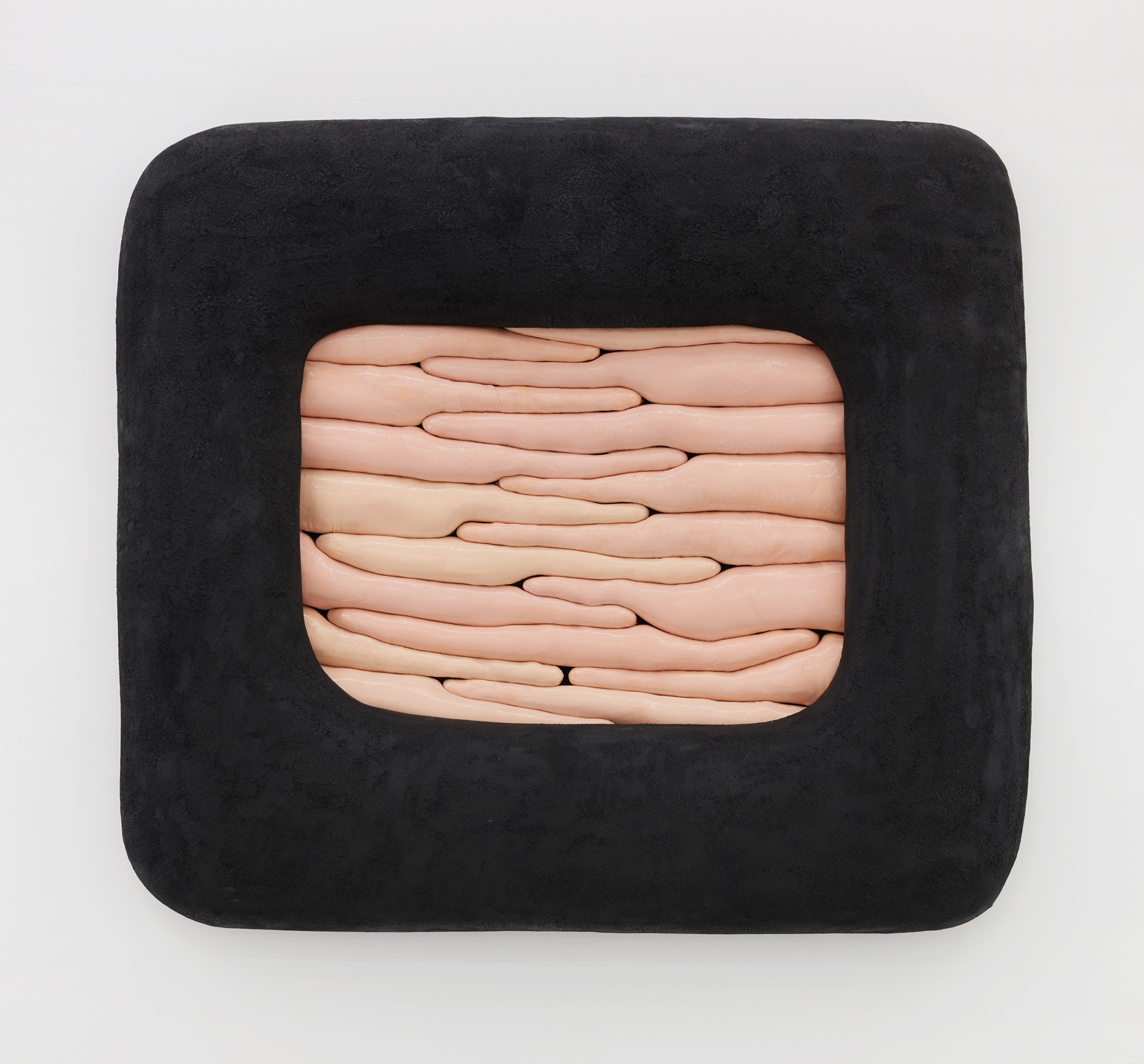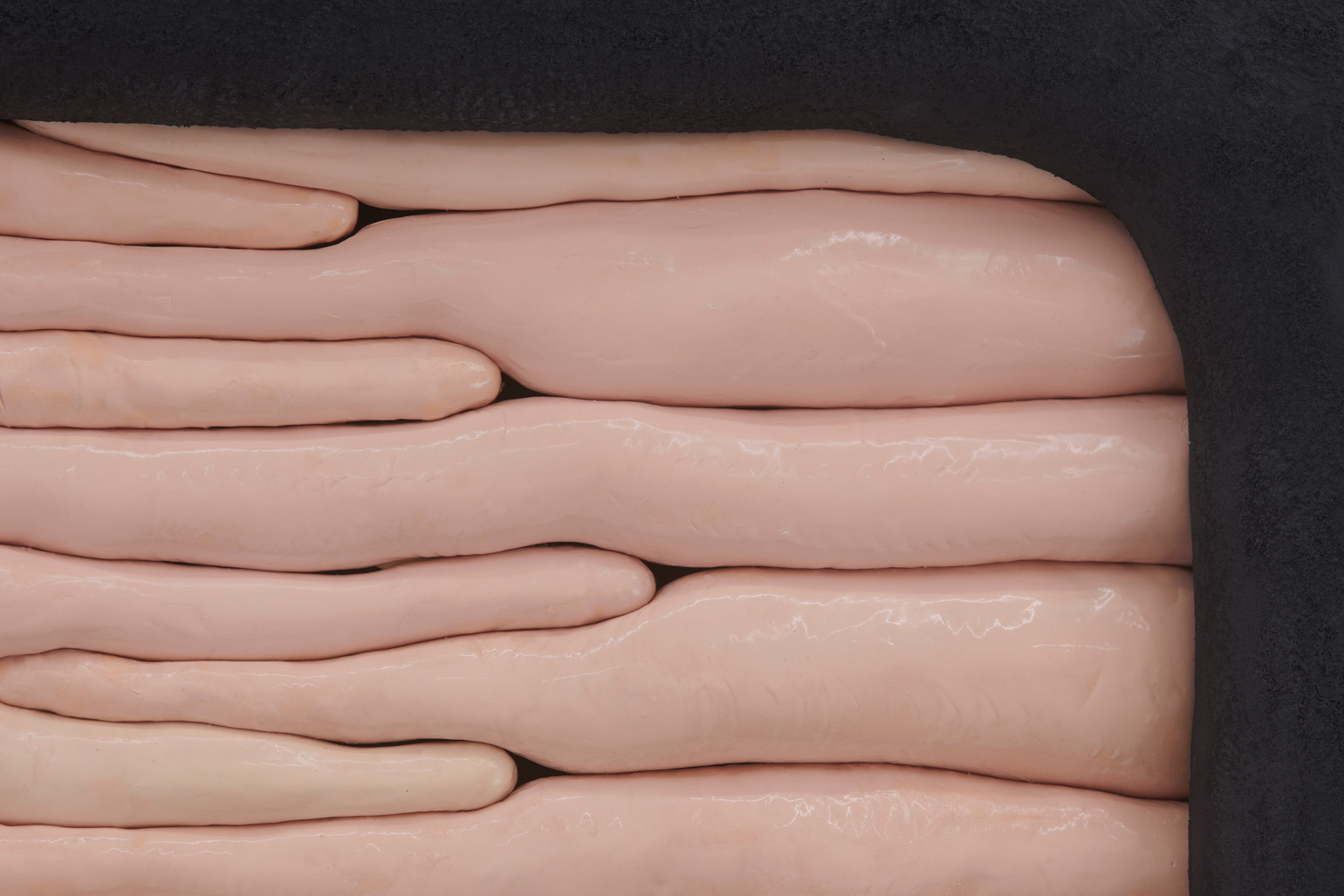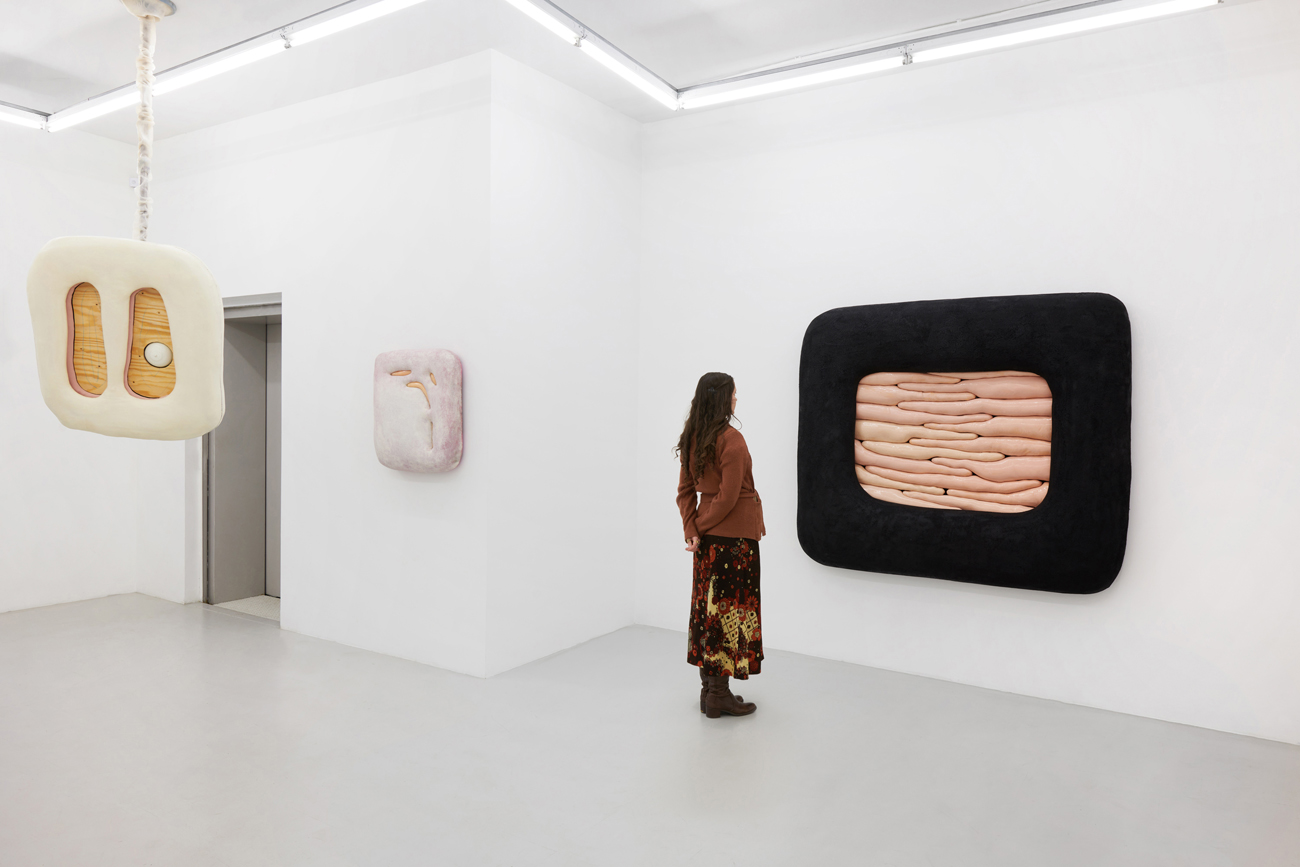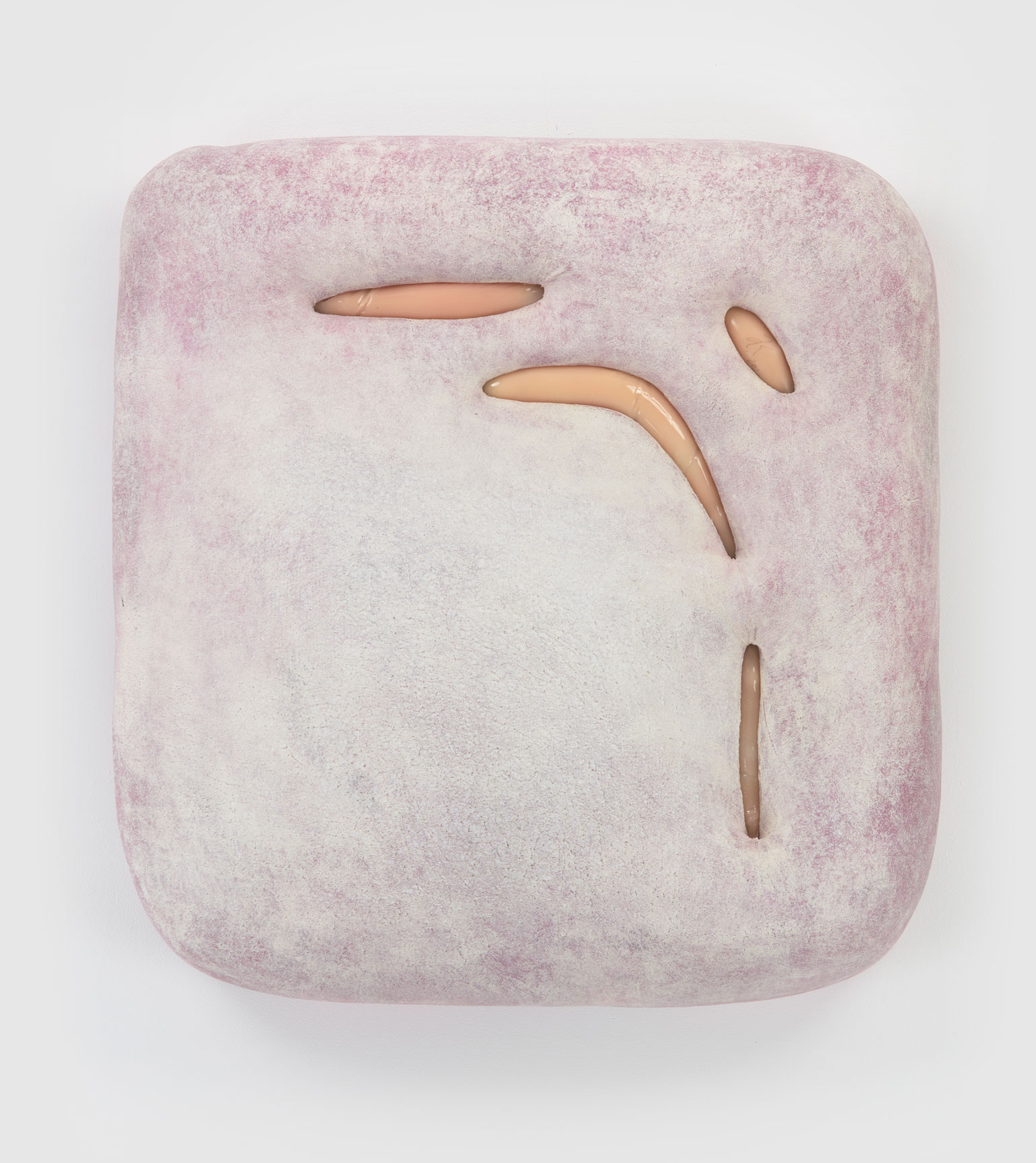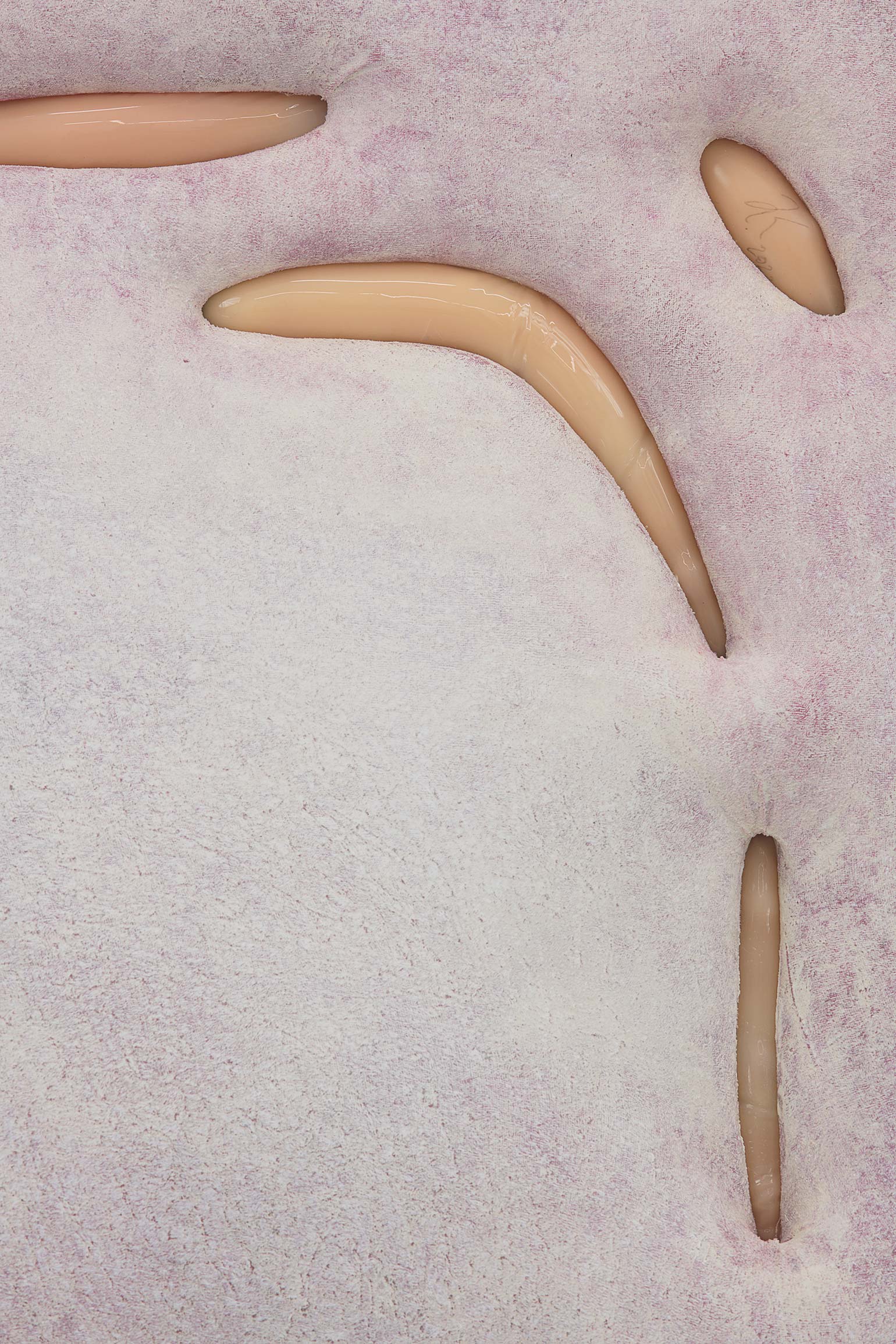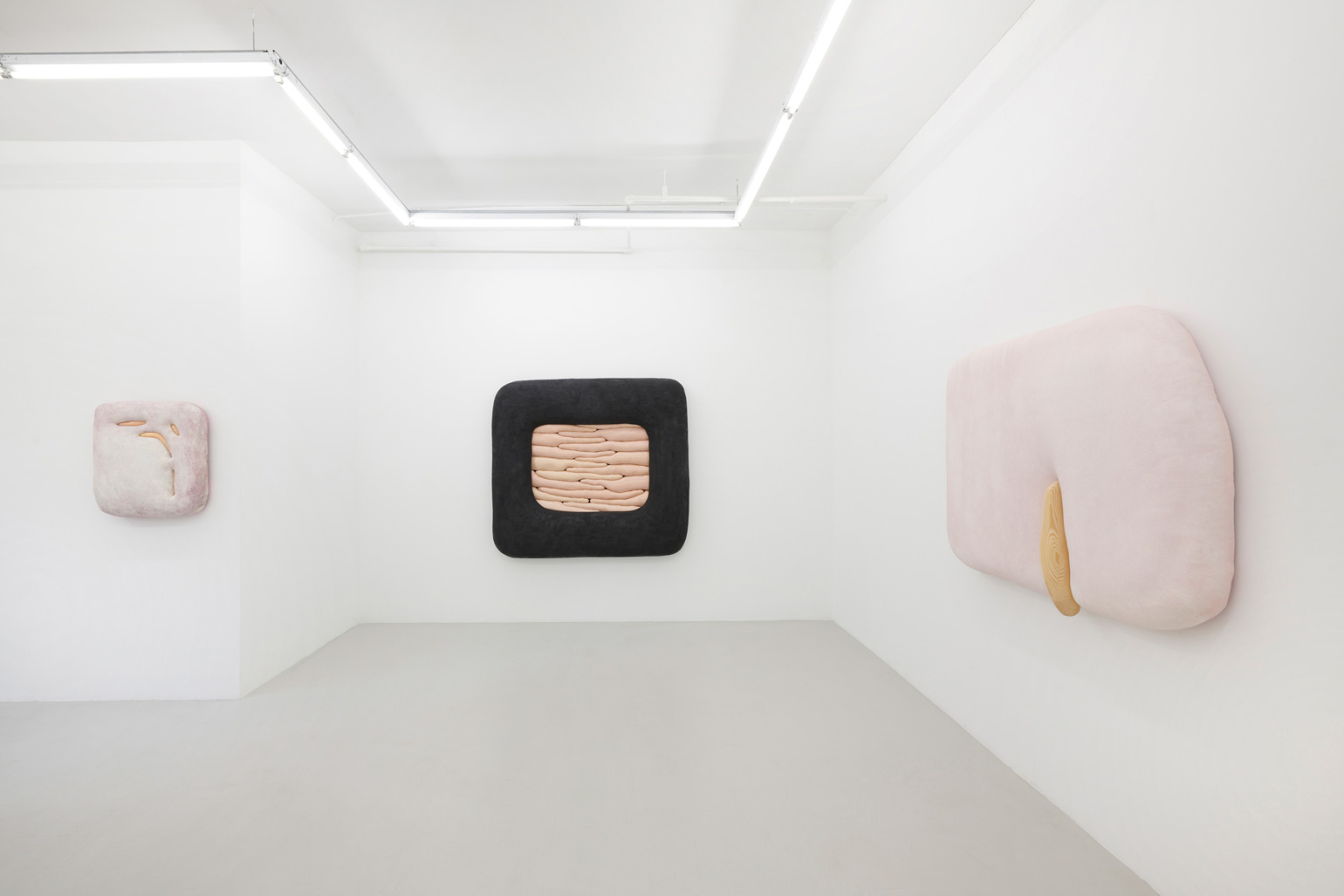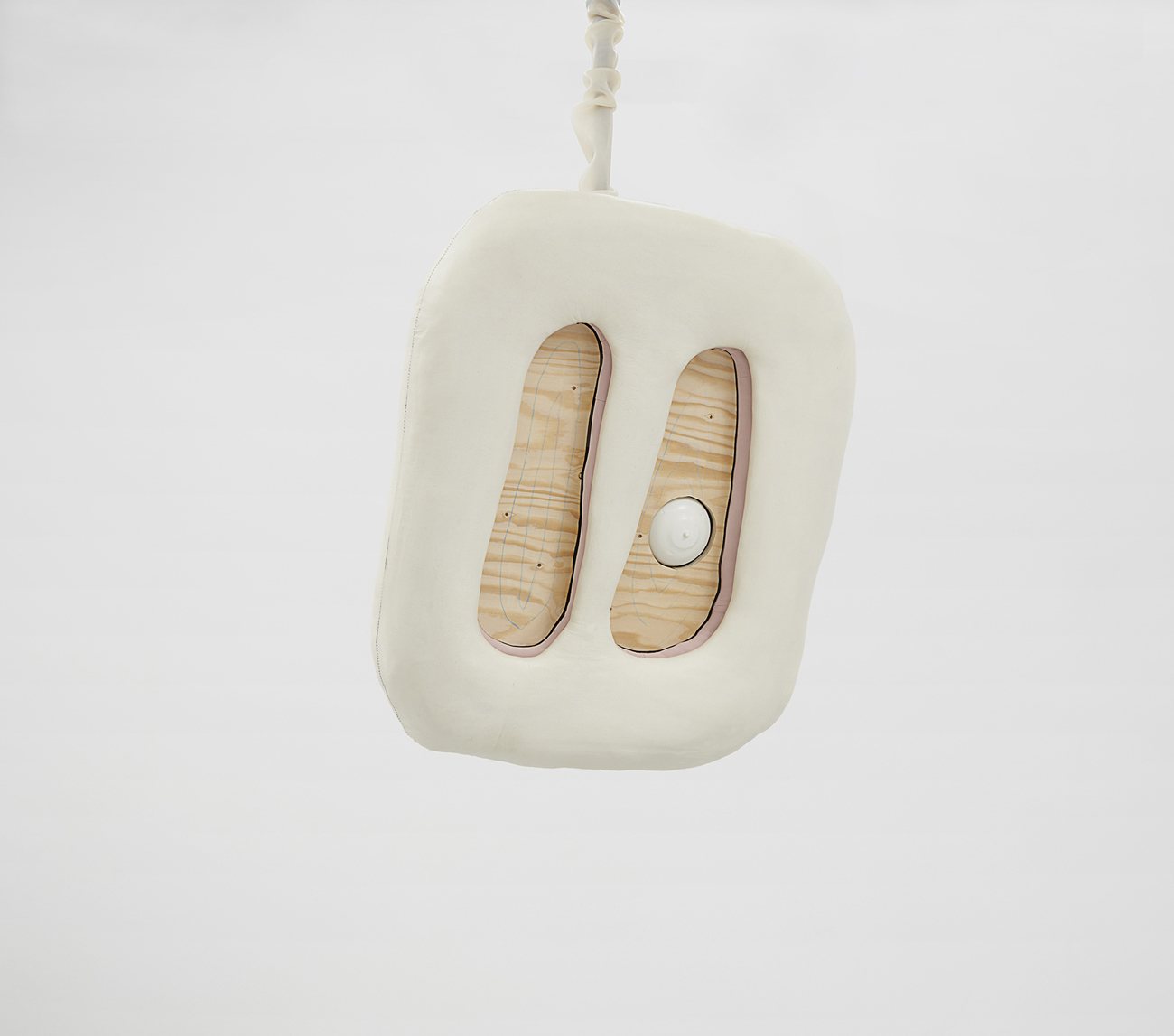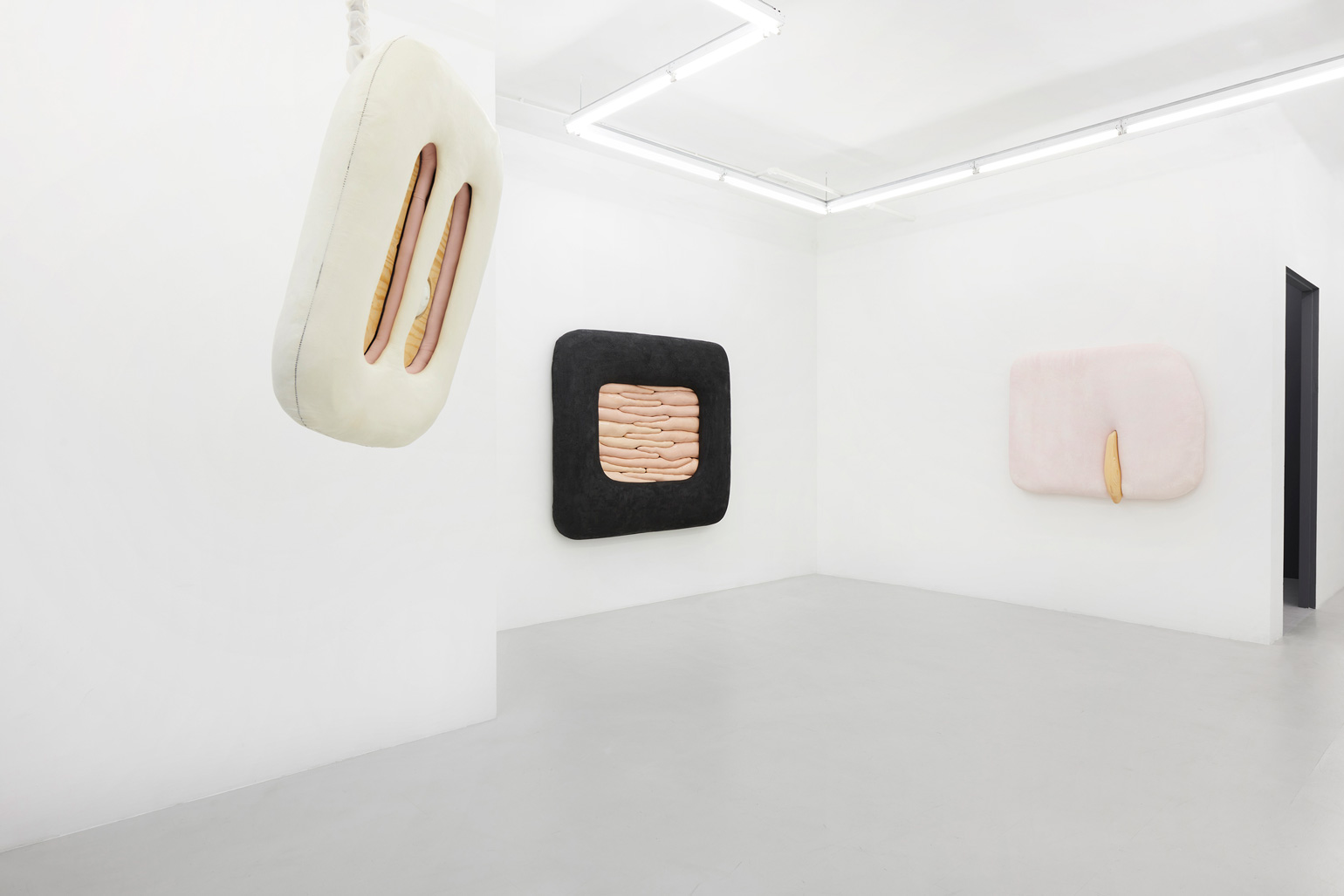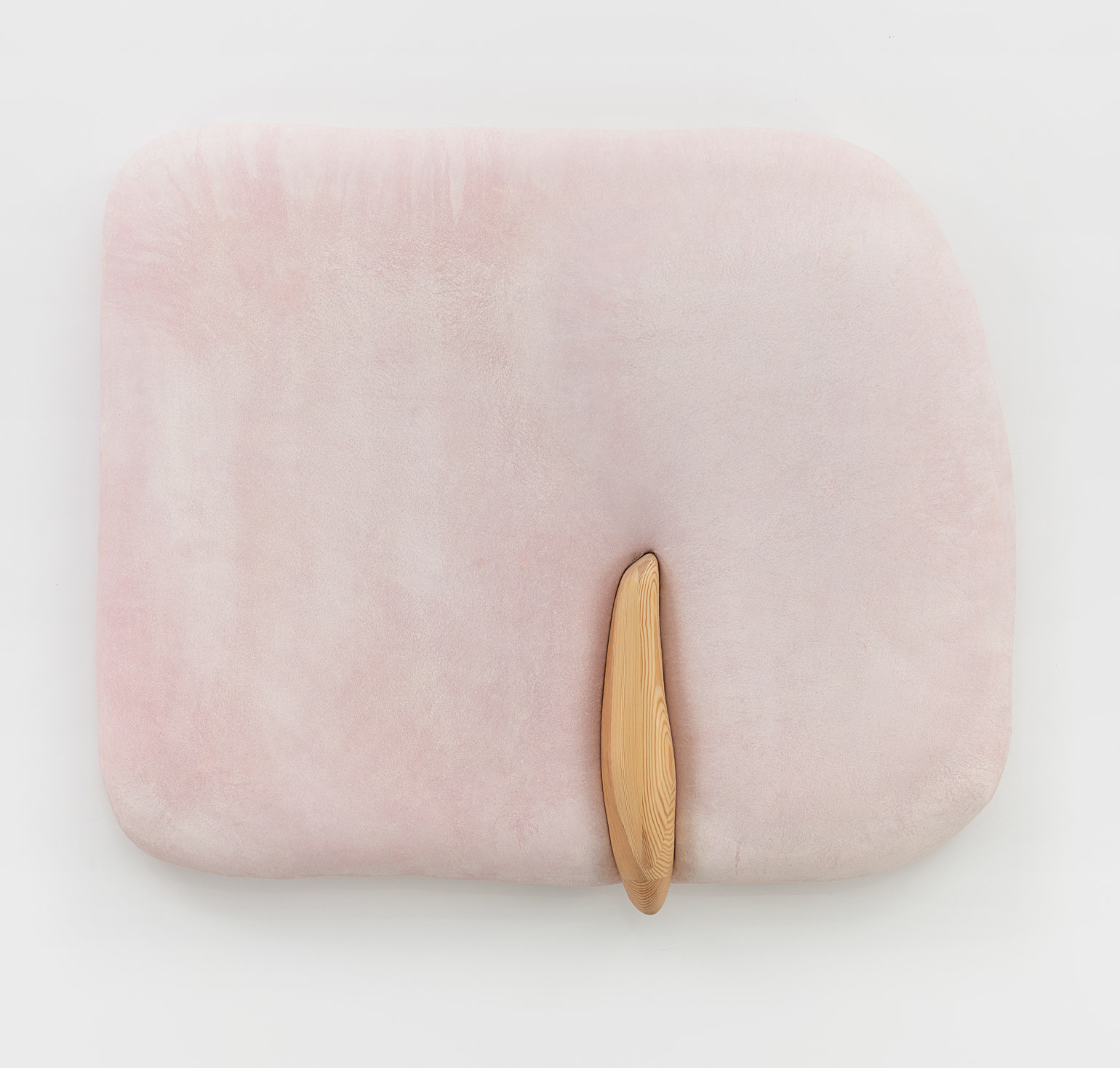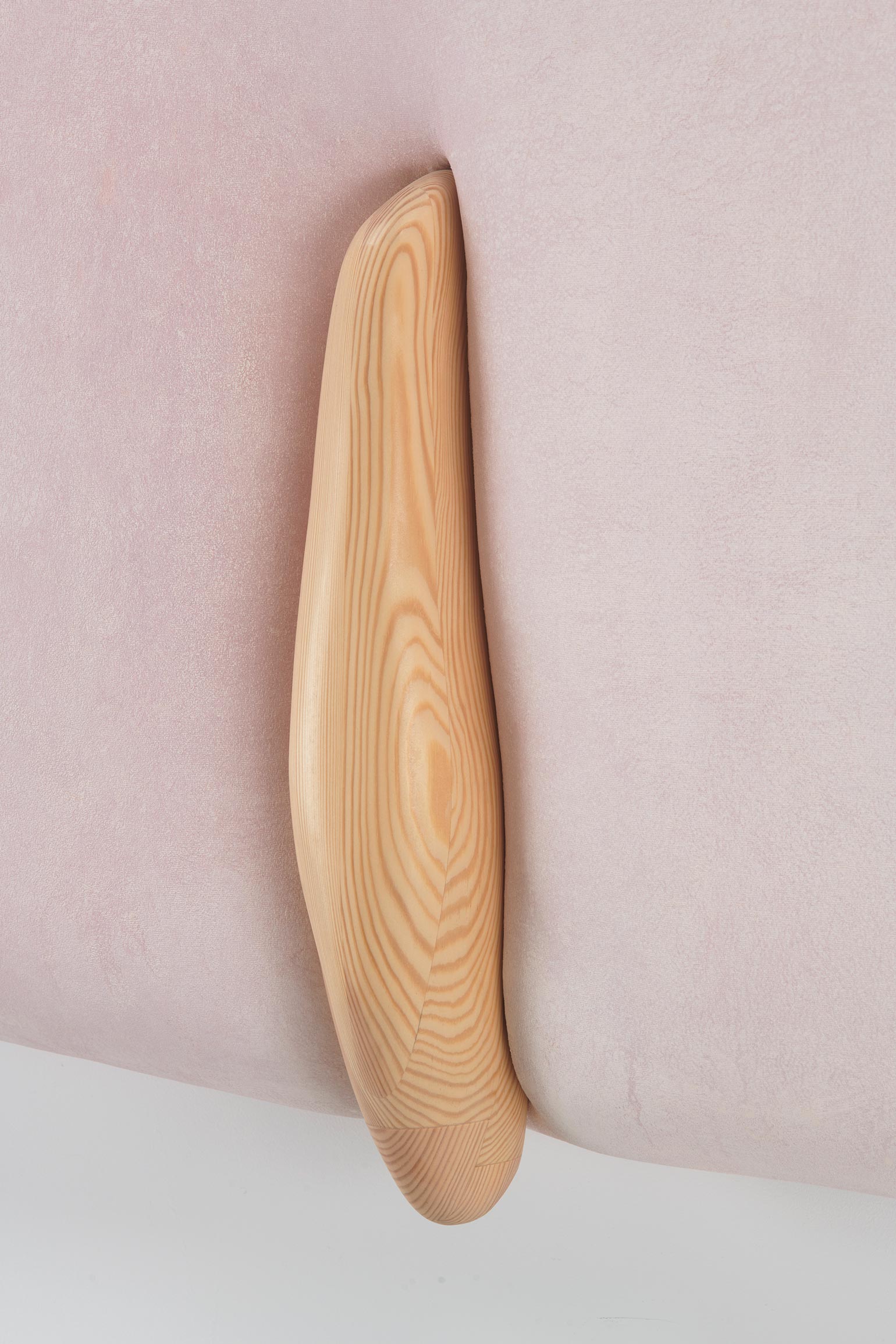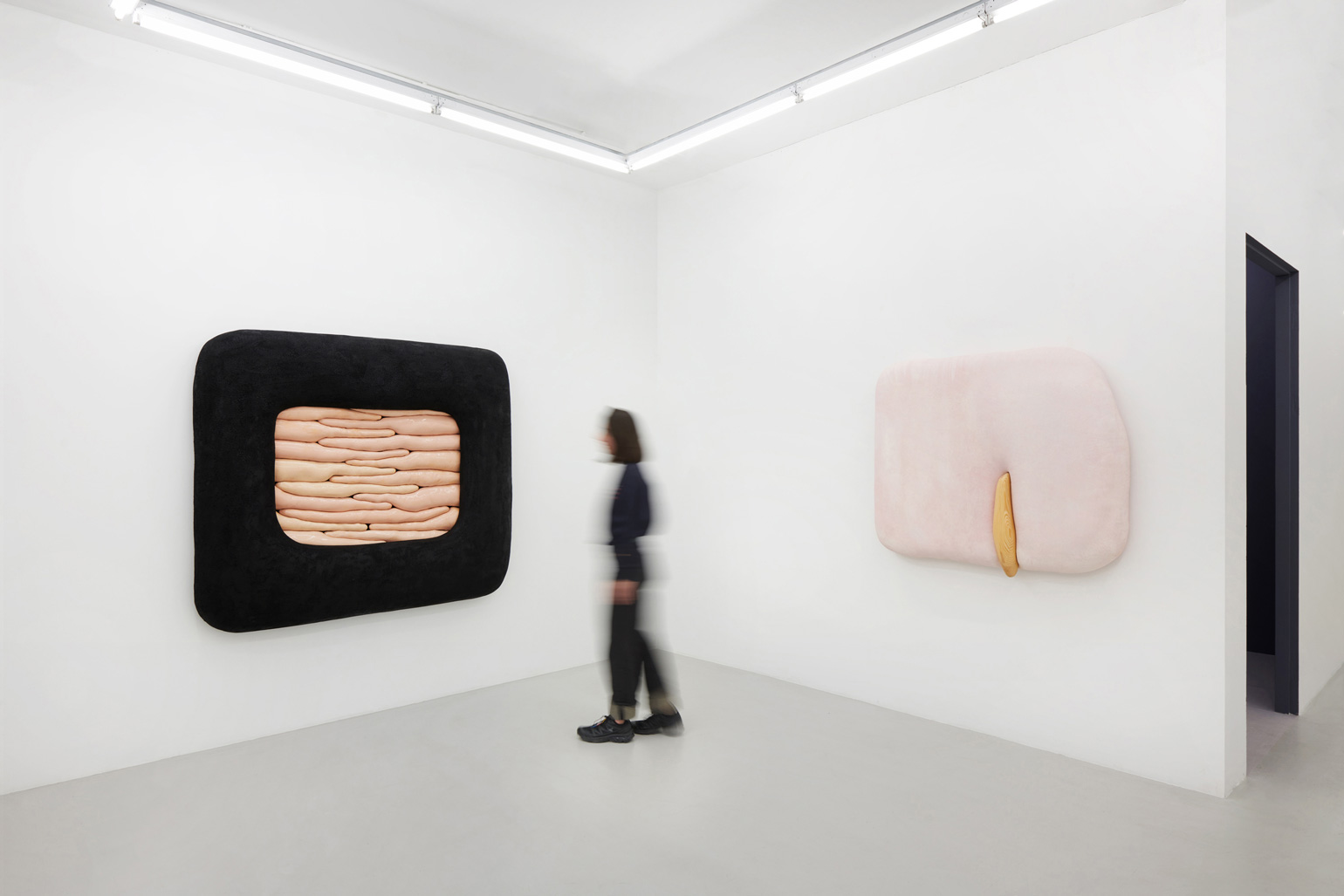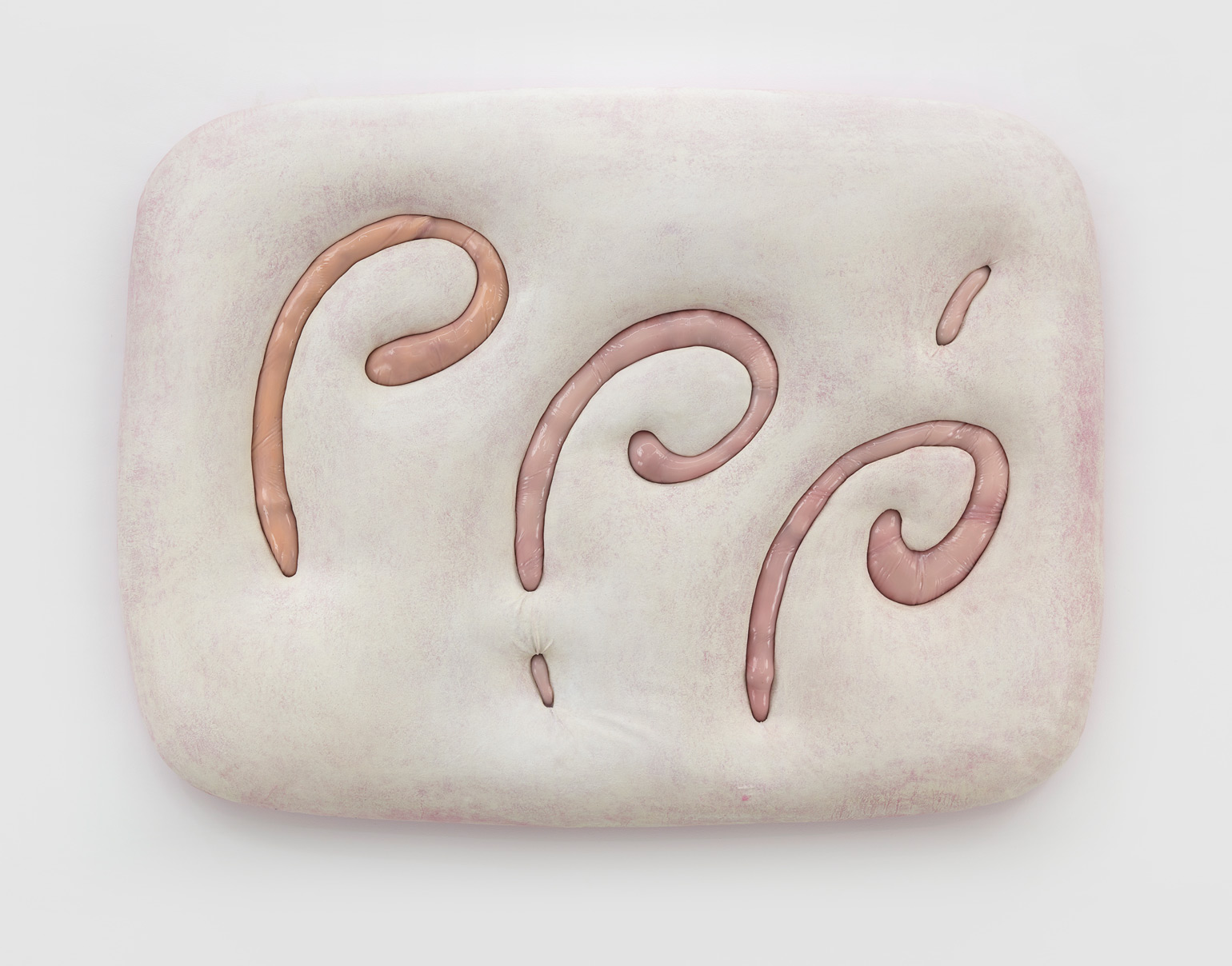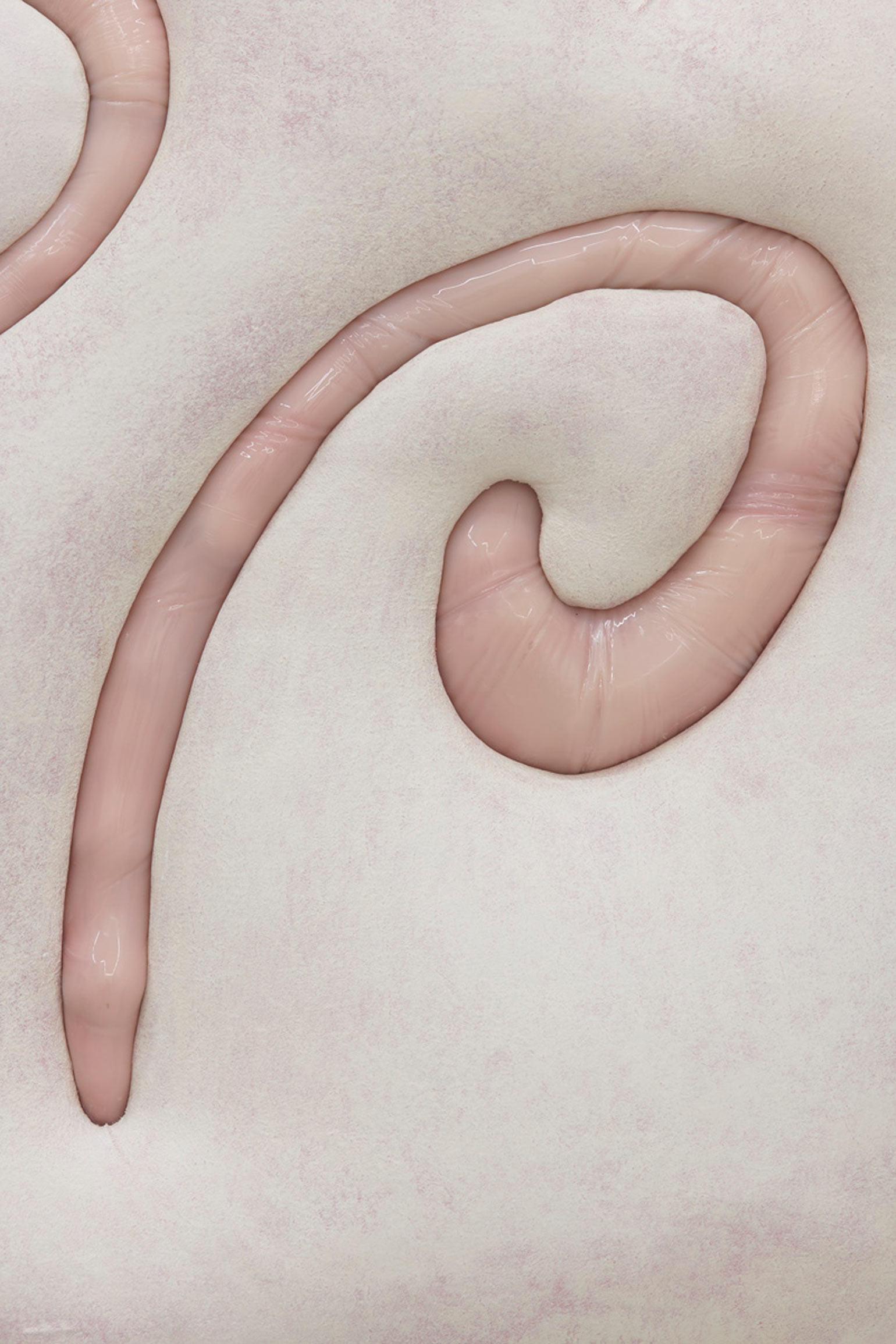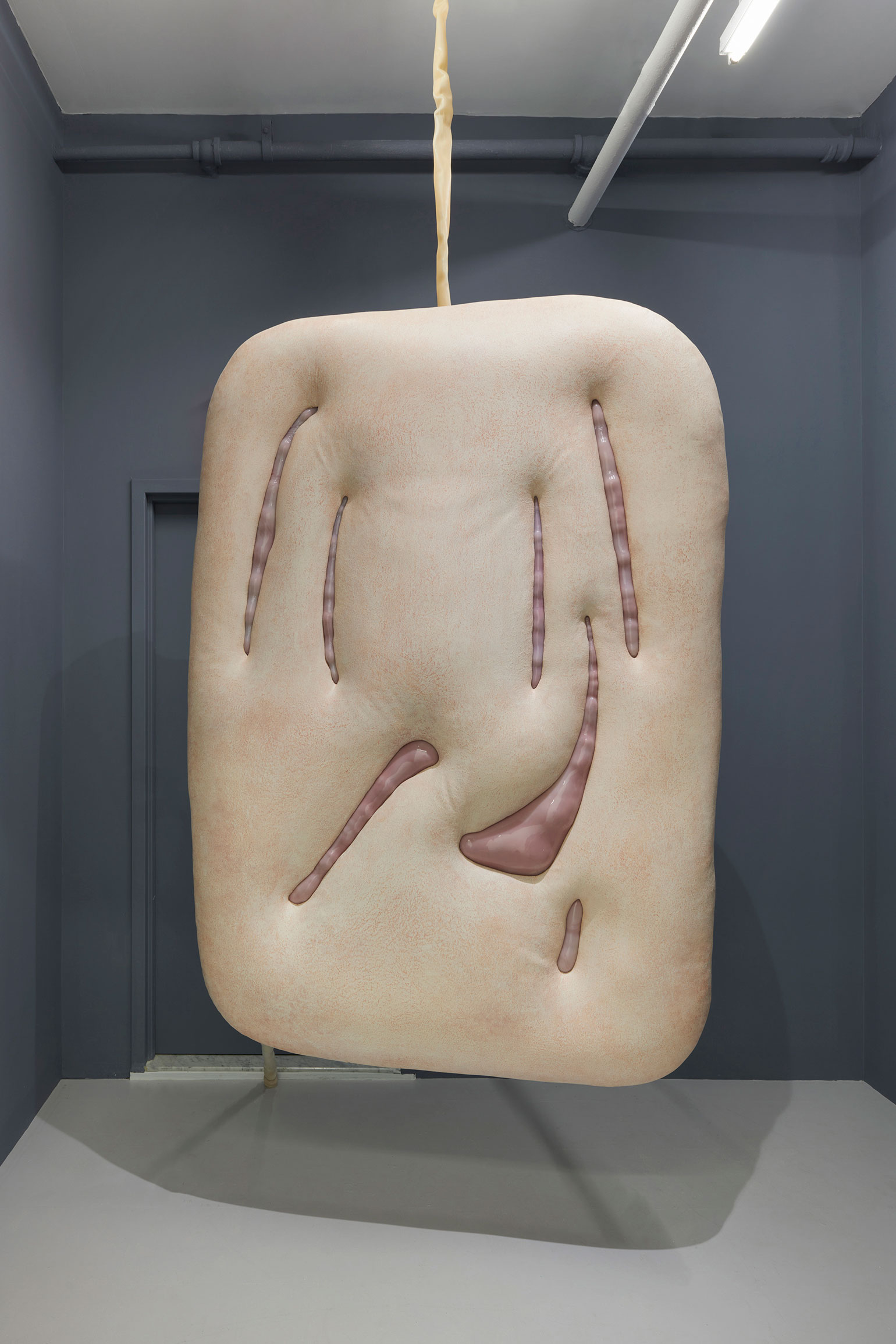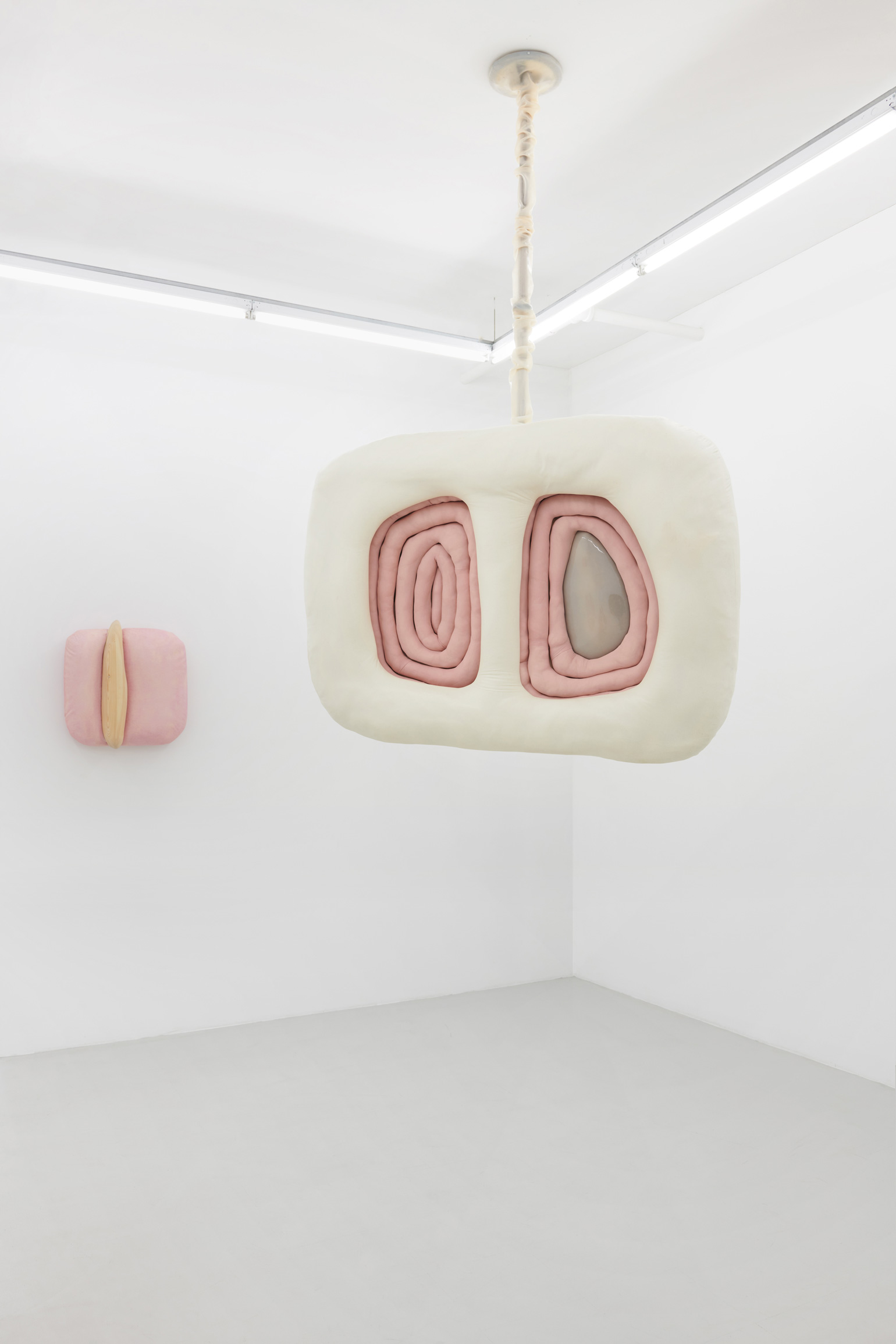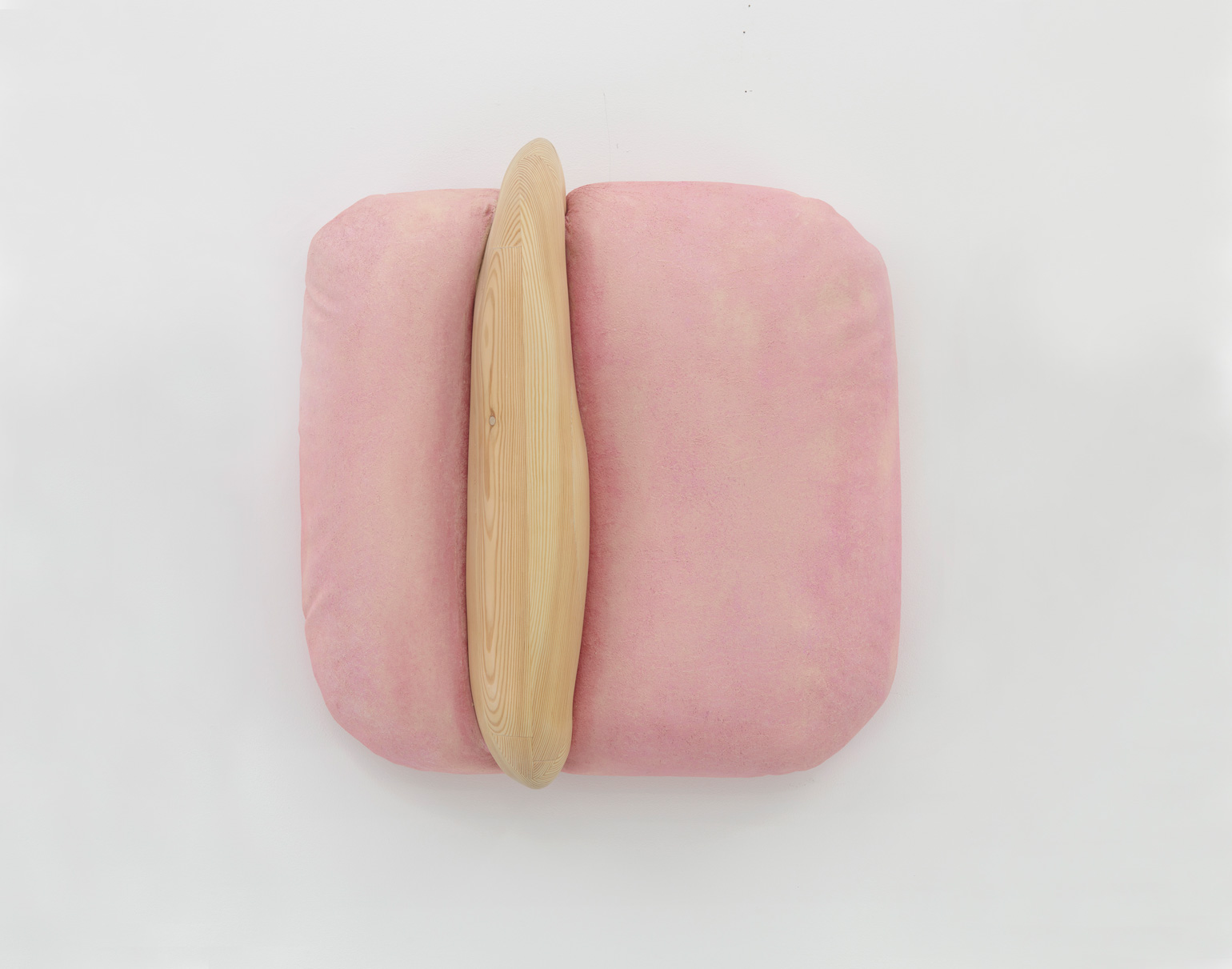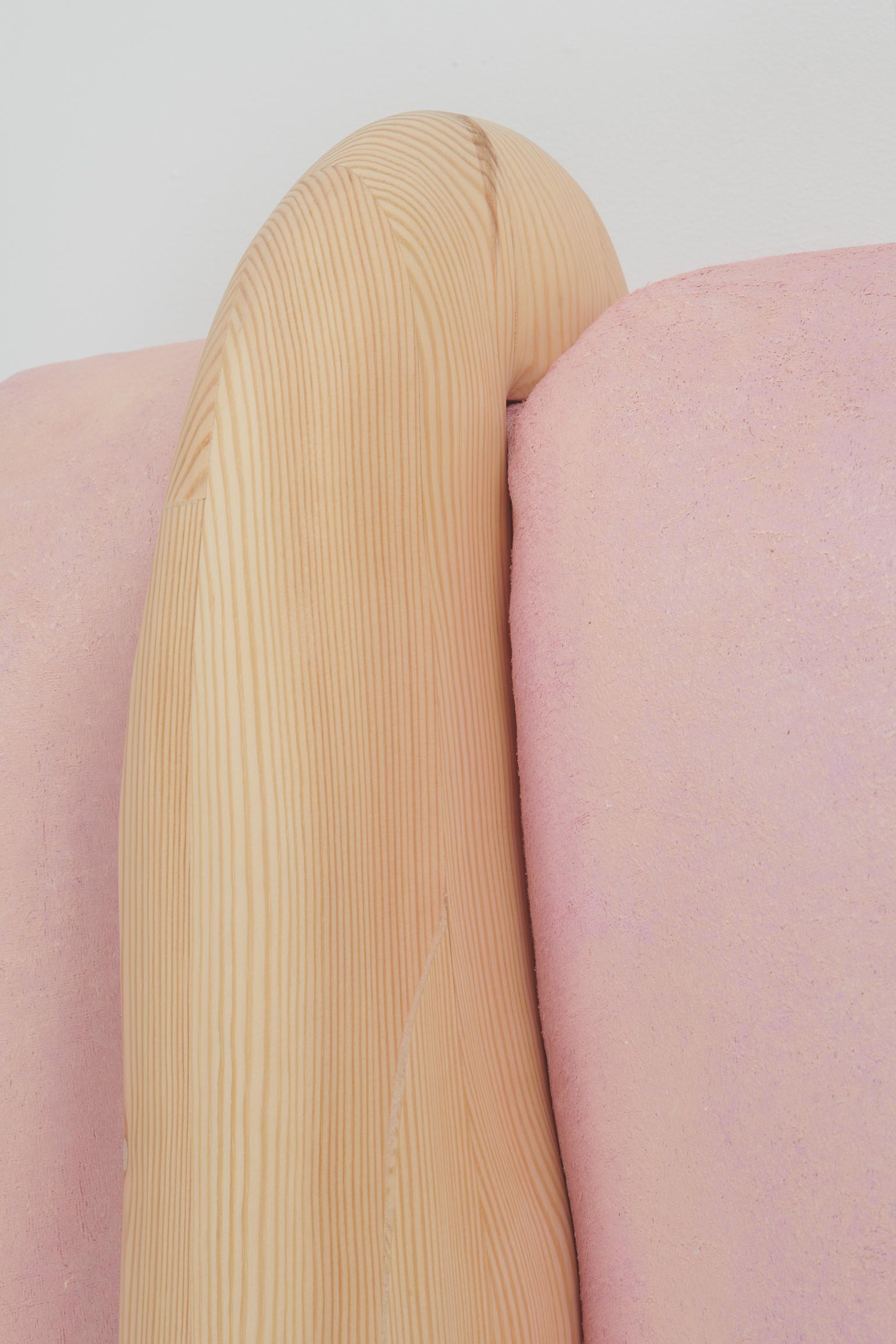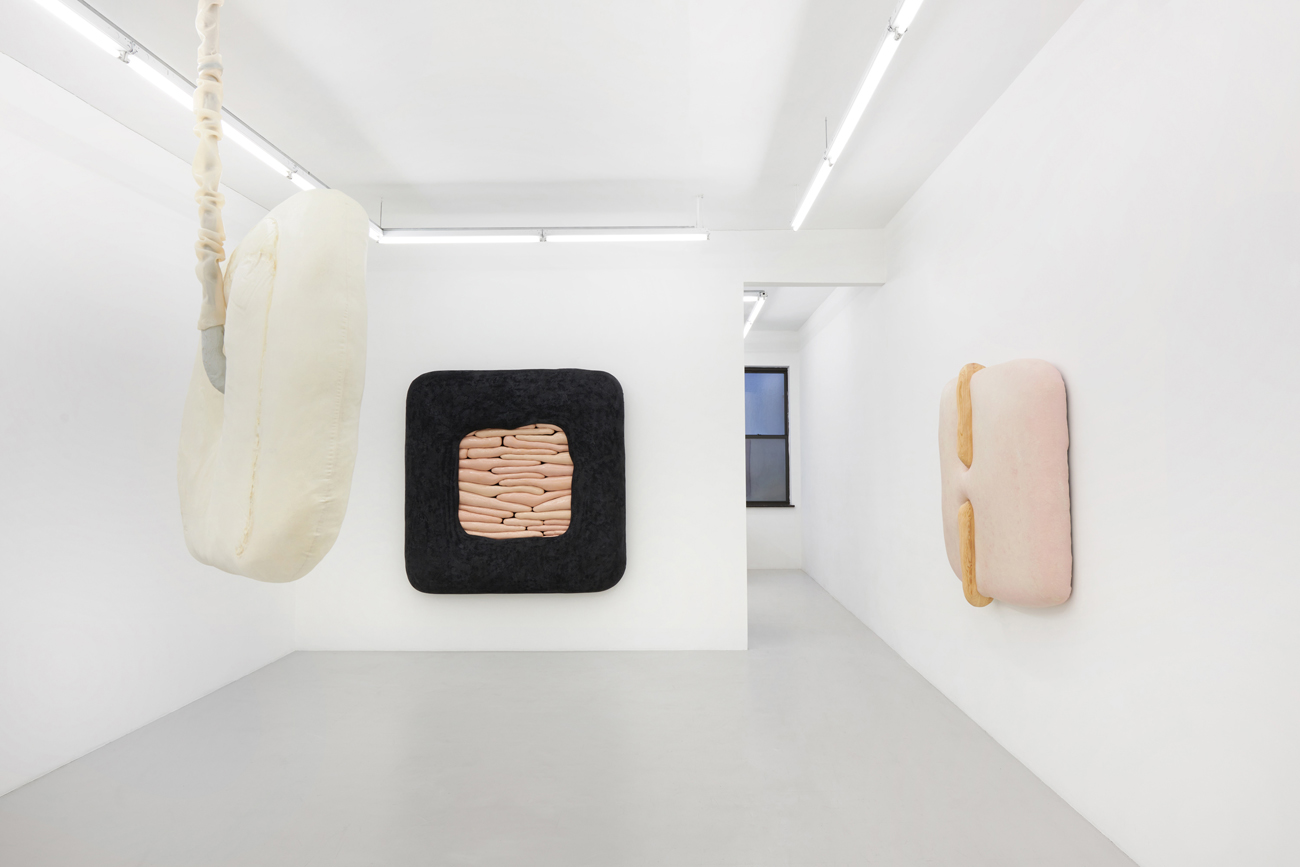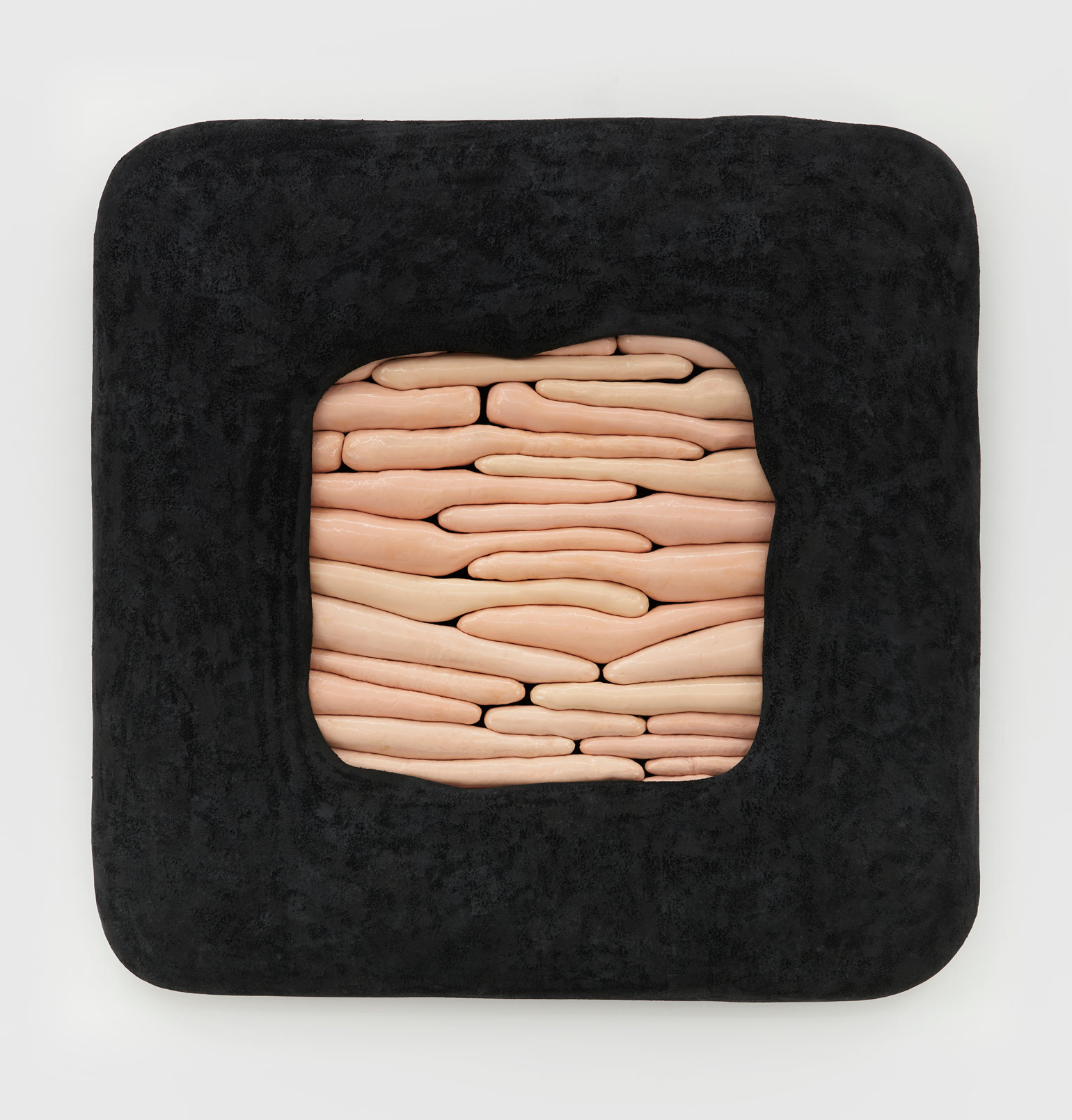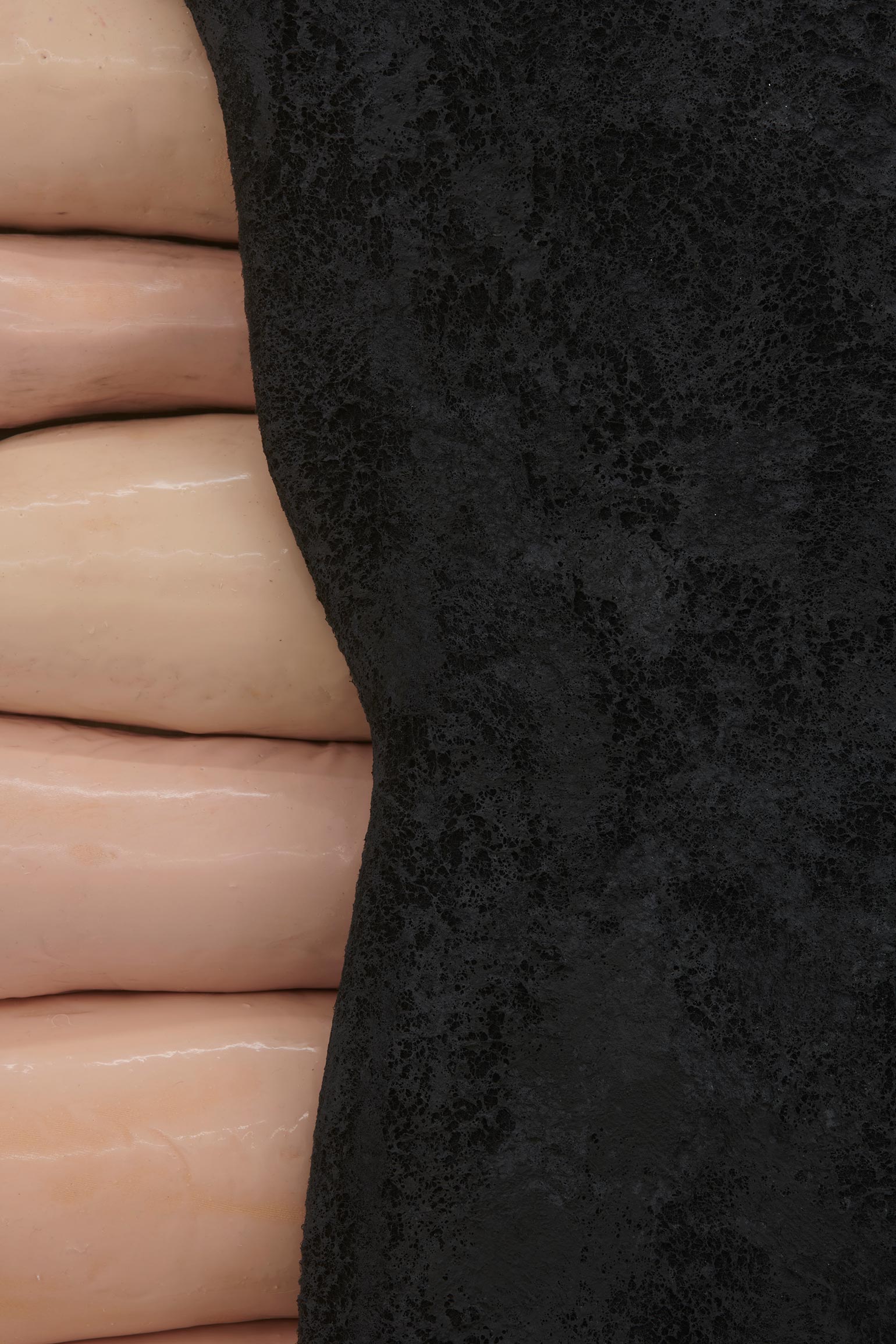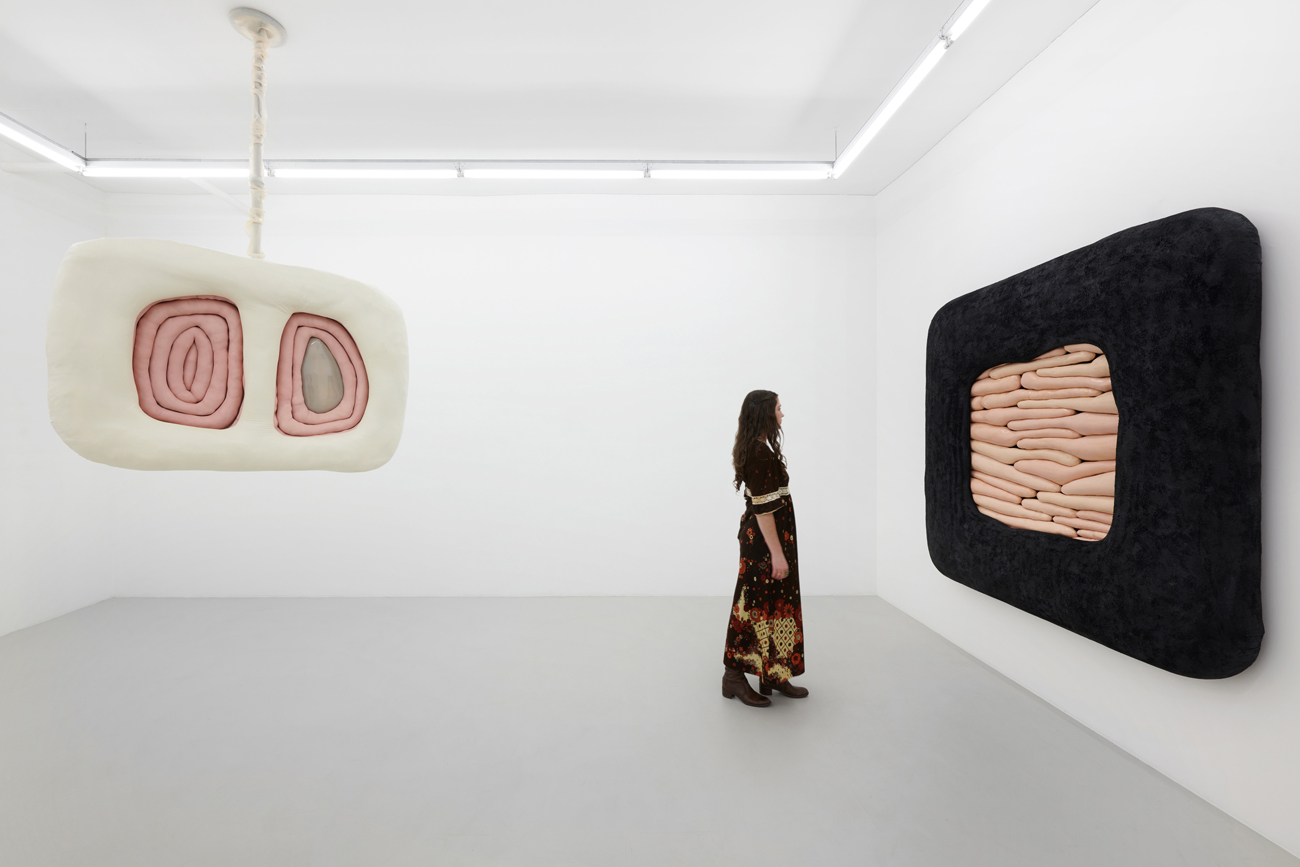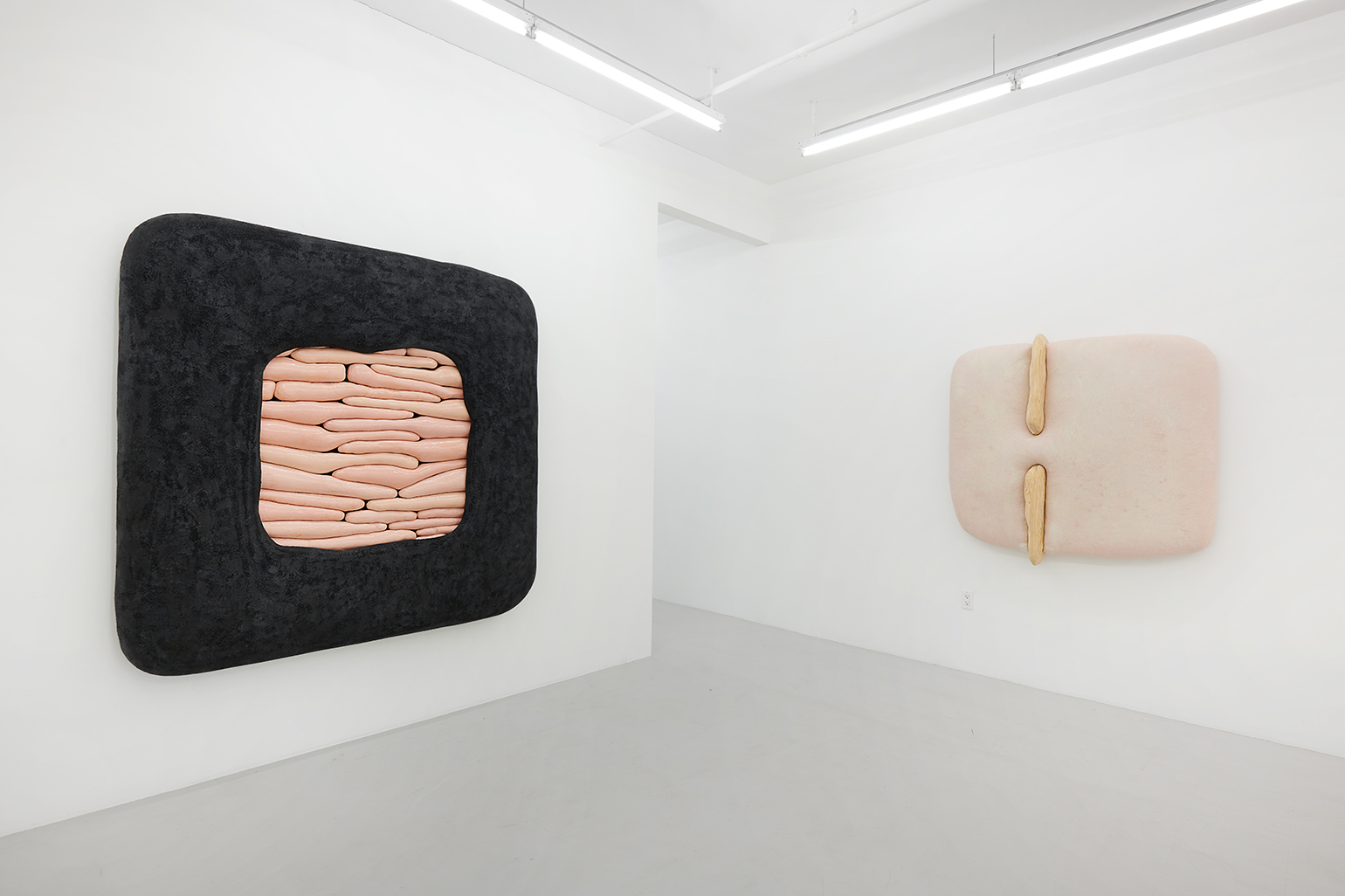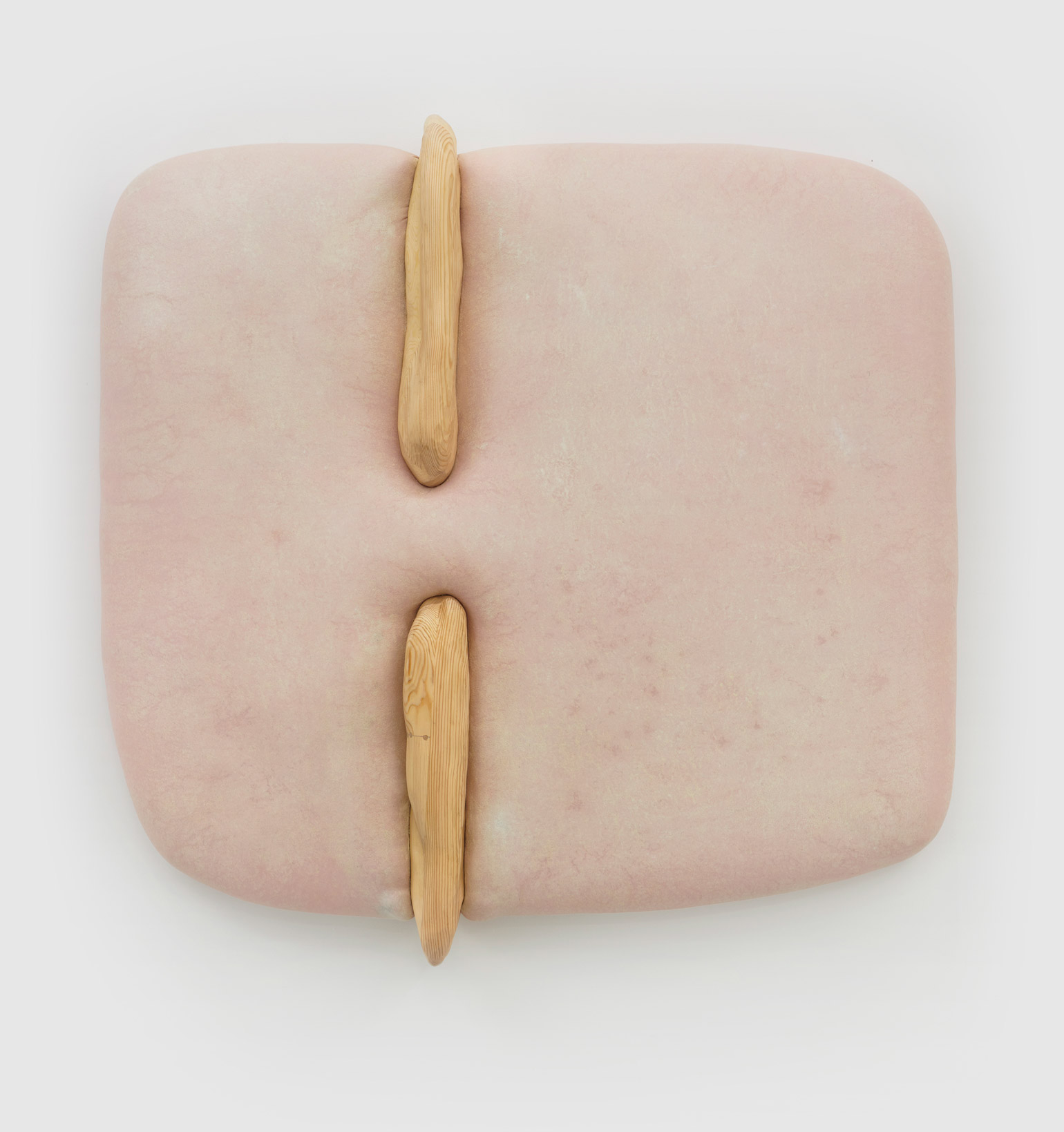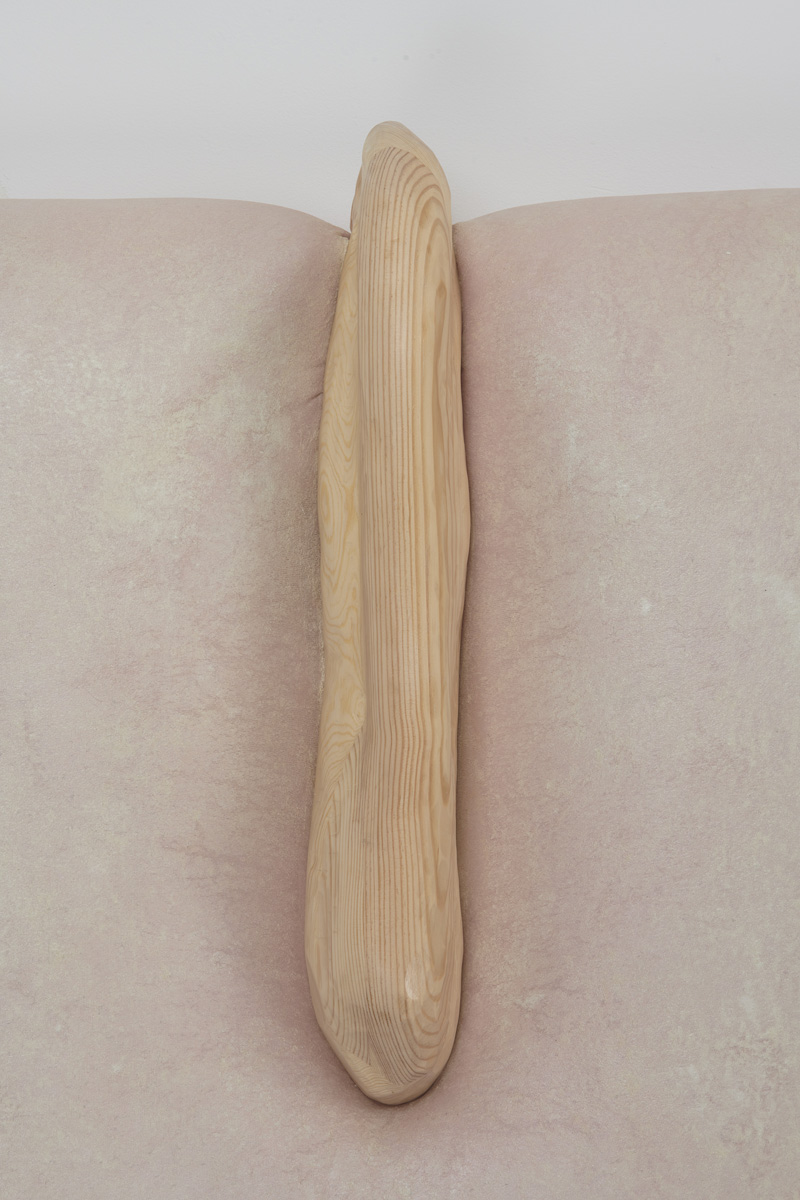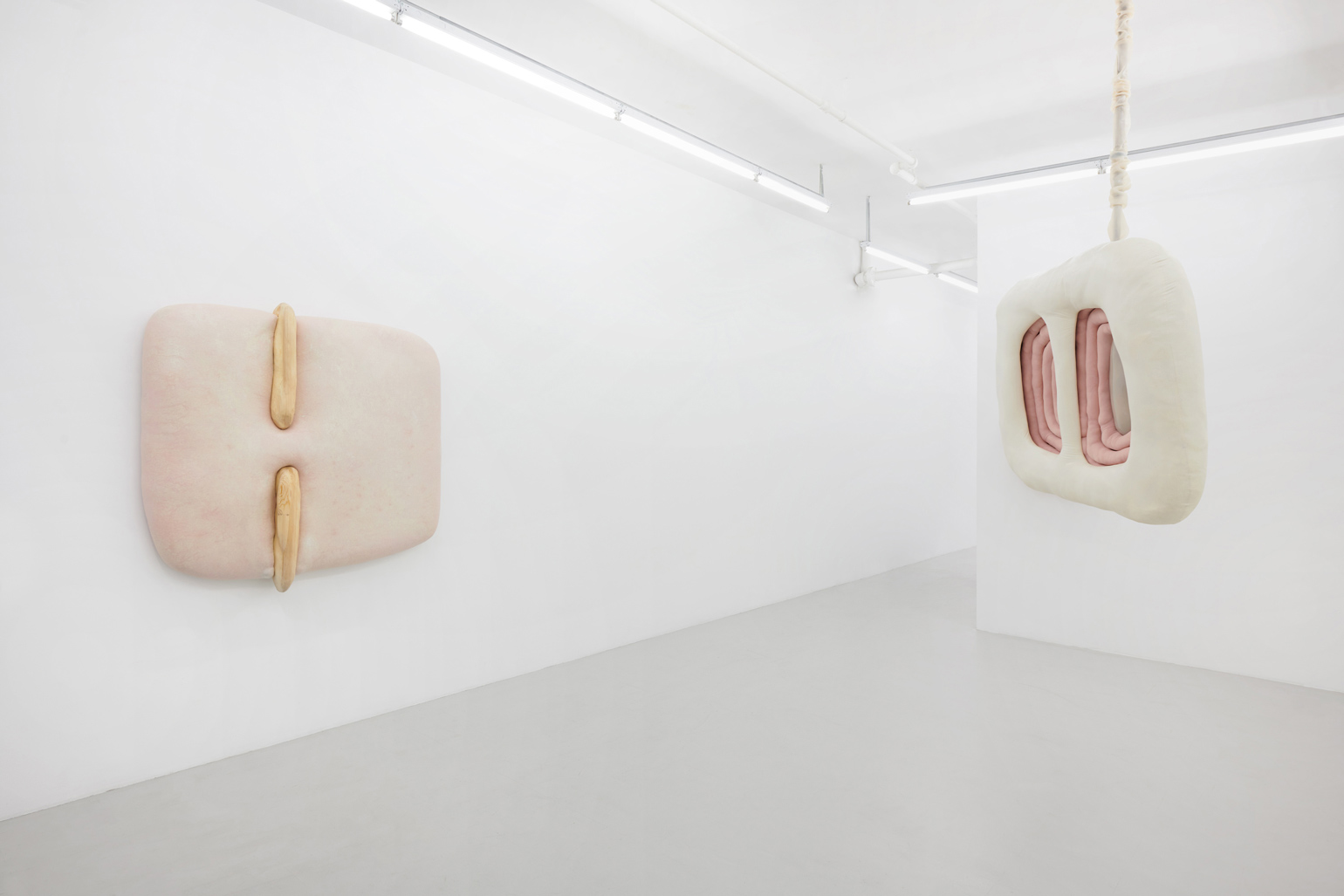The study of heritable health effects marbles the human and inhuman, data gaps coupling in a relentless emulsion with our closest denominators. Some ordinate subordinates: Phi X 174 (Virus); Escherichia coli: (Bacteria); Dictyostelium discoideum (Amoeba); Saccharomyces cerevisiae (Yeast). Those caesurae in the taxonomy of the living, organisms at the edge of life, are an apparatus of lineal codes – little things replicating in big things – seething and stretching within their membranous limits. Packages of protein, and yet a familiar knot contracts in the vitals, knowing evolution is a tear-jerker, a squirming entanglement of recombinatory frailties.
Humans, we append annotations to the haunting refrains of our inheritance. In his first U.S. solo exhibition, the Düssseldorf-based artist Jens Kothe braids together the epigenetic influence of manifold 20th-century sculptural argots. One might number in this clade Robert Gober’s bodily traces as palimpsests of memory, Heidi Bucher’s shape-shifting milky architectonic molds, the errant threat of self-dissection that emanates from the spectre of early Tishan Hsu, Alina Szapocznikow’s erogenous metastasis of the domesticated self, or the biomorphic ouroboros of Frederick Kiesler’s “endless house” — a mutated lineage extruded into the meaty heuristic of Kothe’s speculative morphobiology and immunological ergonomics.
Whether clinging to the wall or freely-suspended, these objects churn codified binaries beyond expectation – visceral/epidermal, prosthetic/native, sensuous/aversive, primeval/plasticine – their sculptural logics minted from substances that would be at home at home: expanded foams, tufted velvet, a touch-up coat of eggshell acrylics, plain-woven canvas, joists of timber, the liniment-like glimmer of varnish, nails, the melodious note of soft-hewn pine. Under Kothe’s hand, they are massaged into the soft securities of a domestic milieu and the pliant, if evanescent, warped comforts of the not-quite flesh.
Implanted into animistic substrates plumping with blood, as well as oligocellular composites dribbling from the ceiling, lesions, whorls, and arcs strain against haptic expectations, canalize through carnal unities. Like an instrument that scans silently for itself with high precision until no longer found, biomechanical prototypes sensing but failing to unearth their own seamlessness, Kothe’s works appear as if harvested from design concepts that target the cusp of their own hard reset, reshaping ad infinitum into structures no one ever expected to exist.
Connoting an extension beyond the plush technics of hominization – the exteriorization of memory, liberation of a slew of our organs, some stab at a cryopolitics – Kothe’s sculptures intimate more than fragmentary automata shorn from the lab (cannibalizable, instrumentalizable as they come). While grifting a DNA heirloom or two from a cyborgian transubstantiation of the informe, they glint with the promise of a thing heaving with a juicier jouissance: tissue samples grafted from an imaginary of post-extinction.
